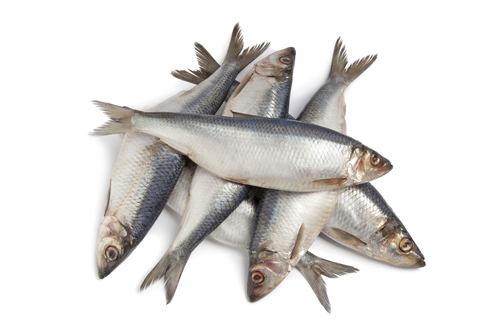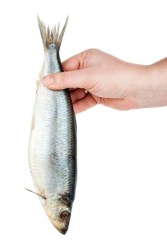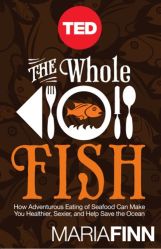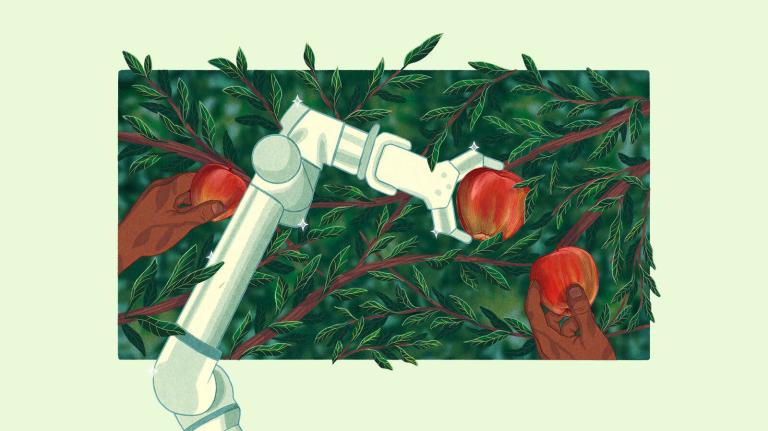The following is excerpted from the new TED Book The Whole Fish: How Adventurous Eating of Seafood Can Make You Healthier, Sexier, and Help Save the Ocean.
A herring run quickens my heart. Some late winter mornings, I awake on my houseboat in Sausalito to sea lions roaring. When I step outside and squint through the fog, I see white gulls and bark-brown cormorants perched on wood pilings and circling in the thick, salty air, waiting to dive. Herring eggs start to appear, stuck to my houseboat’s tie-up lines, in late February and early March. My cats often show up at my door wet and peeved. No longer able to stand dipping their paws in and fishing from the deck, they fall or dive in after herring.
The San Francisco Bay used to support many fisheries. In his book Tales of the Fish Patrol, Jack London wrote about chasing down shrimp catchers, salmon poachers, oyster gatherers, and scofflaw fishermen hooking sturgeon by illegal methods. Now only a few fishermen fire up their boats to go after herring, the very last commercial fishery left in the bay. Herring here too are fished for their eggs to sell to the Japanese, with the rest turned into fishmeal.
It’s said that if a child grows a vegetable in his garden, he will eat it. The same applies to fish. There is nothing better than pulling a fish out of the water and cooking it right there at the shore’s edge over flickering flames.
Recently I decided to start eating herring from the San Francisco Bay. They’re super healthy, local, and fresh, yet virtually no one in this Slow Food hotspot eats these fish. The only problem is that I didn’t know how to catch them without a large net, a boat, and a skipper. So I decided to go on a Coastal Forage tour with Kirk Lombard on the San Francisco Bay.
If all commercial fishermen used Lombard’s methods, sustainability would be a nonissue. He goes for lesser-know species using the most-sporting methods possible. He hand-tosses a net, Hawaiian style, for smelt; he poke-poles monkeyface eel; and he catches red crab with a fishing pole and snare. He shares his maritime adventures and knowledge of the bay’s edible intertidal zone on his Sea Forager Tours.
On a Saturday morning, I gathered with 20-some other people near the lighthouse on Yacht Road in the Marina neighborhood of San Francisco. Lombard warned us early on that the Advil he had taken that morning might wear off at any moment. The previous week he had repeatedly buried fish hooks into his hands, and then, when diving into mudflats after horseneck clams, he had infected the wounds. But he powered through the pain and showed us edible limpets that “taste like abalone” and warned us that we “must be willing to risk [our] lives for them, as they were gathered on rocks where waves crashed.”
Lombard is as much a showman as a fisherman. He is handsome, with an adventurous, Tom Sawyerish air about him. He baited up a crab snare with squid and showed us how to fish for them. Only red crabs are keepers in the bay, but like most fishermen, he wasn’t going to reveal his prime fishing spots, only his wisdom on how to catch the critters. He fishes for surf smelt with a hand-tossed net and for night smelt with an A-frame based on Native American fishing methods. He walks in miles to toss his net for smelt, and he hauls the catch out on his back and sells it to local restaurants that make “fries with eyes” out of it.
He has yet to be granted a commercial fishing license for using his hand-tossed net for herring fishing, but he hopes to get one soon. He is helping to bring back underappreciated forage fish to restaurants in San Francisco. And for those of us who are willing, he’s showing us a way to go out and harvest for ourselves.
Fortunately, for people who don’t have the time or inclination to catch their own, innovative chefs are serving up forage fish. At fish markets, these varieties are often the cheapest of the bunch, costing around $3 a pound. Little by little, I have found myself developing cravings for sardines grilled over wood and drizzled with olive oil and a burst of fresh lemon, salty little fried anchovies dipped in creamy aioli, a mackerel that can stand up to ginger and seaweed, and the pickled herring that gave Vikings their stamina.
So here’s the solution: Bypass the big farmed fish that eat forage fish (in the form of fishmeal) and instead eat these little fish yourself. Even better, forage for your dinner: Get wet and muddy and come to know your coastline. If you go fishing, clamming, searching for mussels, or foraging for seaweed, you’ll be part of the changing of seasons, the movement of tides, and you’ll get glimpses into the marvels of our natural world. These are all ways to enter the realm of the whole fish. Anything you catch will taste that much better. And you’ll bring yourself into the food web in a healthy and intimate way.
Everything that we experience for the first time — a new food to taste, a new place to visit, a new activity to try — keeps life exciting. When life is boring, let’s face it, sex is boring. That’s the more abstract way that adventurous eating is an aphrodisiac. Get excited about what you eat. Keep it varied. Encourage creativity in those around you; introducing friends to a new food is a gift you give them. And don’t just eat the familiar fillet. Embrace the whole fish, passionately.
***
TED Books are available via Amazon.com, Apple’s iBookstore, and Barnes and Noble online, and are compatible with Kindle, Nook, and iBook platforms. They can be purchased for $2.99 each. Membership to TED Live comes with a free one-year subscription to TED Books — allowing the texts to be delivered directly as they are published.
TED Books are also available in multimedia format with embedded audio and video via the free TED Books app for iPhone and iPad. Learn more.




